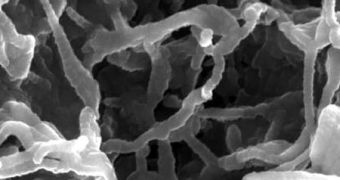Nanocomposite materials have been receiving a lot of attention lately, and that is starting to show in innovations produced at leading universities. One such innovation comes from Rice University experts, who created a material that becomes more resistant the more you abuse it.
This trait can be found in the human body as well. Whenever bones and muscles are subjected to excessive strain or effort, they become harder, as a means of adaptation to the new conditions they are faced with.
But animals evolved this trait over hundreds of millions of years, whereas the research team had to build it into a new material from scratch. The study was carried out in the lab of Rice professor in mechanical engineering and materials science and of chemistry, Pulickel Ajayan.
In a scientific paper appearing in this month's issue of the esteemed journal ACS Nano, the expert and his team report how polymer-based nanocomposites can be stiffened and made harder by using carbon nanotubes as fillers.
Inside this carefully engineered nanocomposite material, the interface between the nanostructures and the polymers is tremendously dynamic and complex. These interactions were discovered by Rice graduate student Brent Carey.
He had created a new material from scratch, by inserting a forest of vertically-aligned, multi-walled CNT into an inert, rubbery polymer called polydimethylsiloxane (PDMS). After he obtained the new composite, he subjected it to what is known as a high-cycle fatigue test.
During this investigation, materials are subjected to great stress, so that experts can assess the limits of their endurance. Carey learned that the more stress the new material got, the stiffer it became.
Working with funds from a NASA fellowship, Carey subjected the nanocomposite to a dynamic mechanical analysis (DMA), which meant that a batch of the stuff was compressed 5 times per second for about a week. A total of 3.5 million compressions were executed.
At the end of the 7 days, that batch of material had become 12 percent stiffer than it was initially. The Rice team also determined that additional potential for improvement existed.
“It took a bit of tweaking to get the instrument to do this. DMA generally assumes that your material isn’t changing in any permanent way,” Casey says.
“In the early tests, the software kept telling me, 'I've damaged the sample!' as the stiffness increased. I also had to trick it with an unsolvable program loop to achieve the high number of cycles,” he adds.
“For engineered materials, people would love to have a composite like this. This work shows how nanomaterials in composites can be creatively used,” Ajayan explains.

 14 DAY TRIAL //
14 DAY TRIAL //